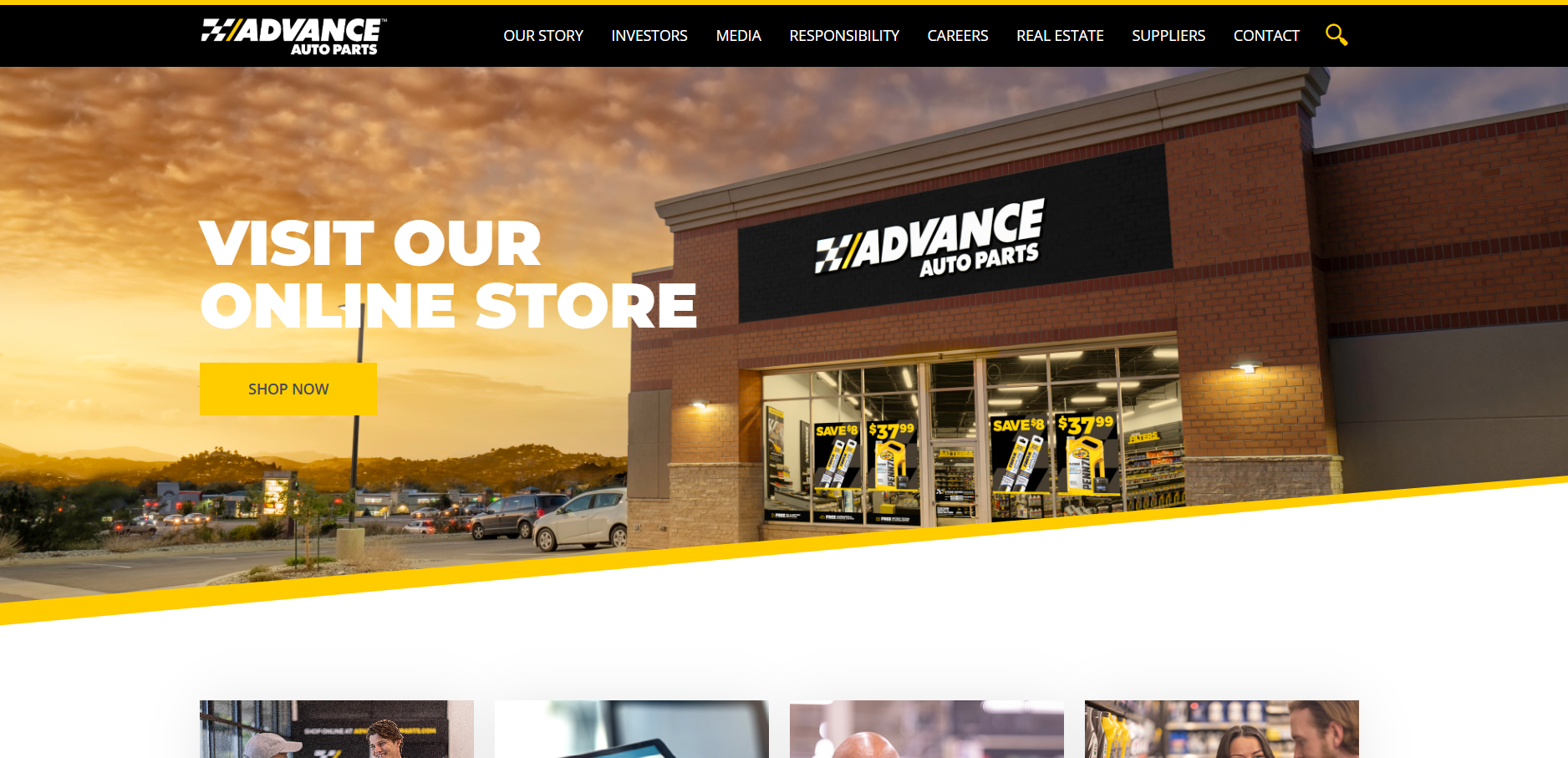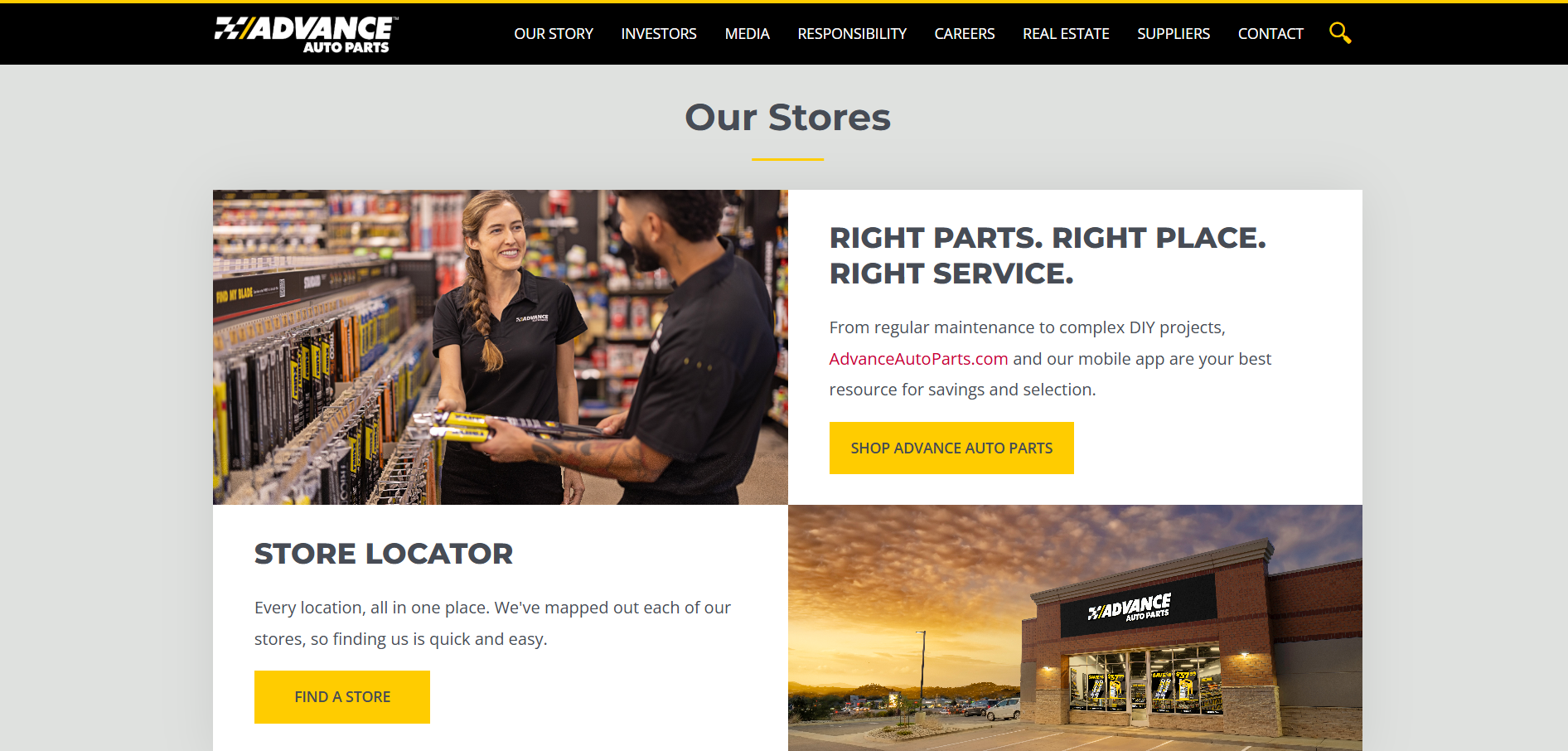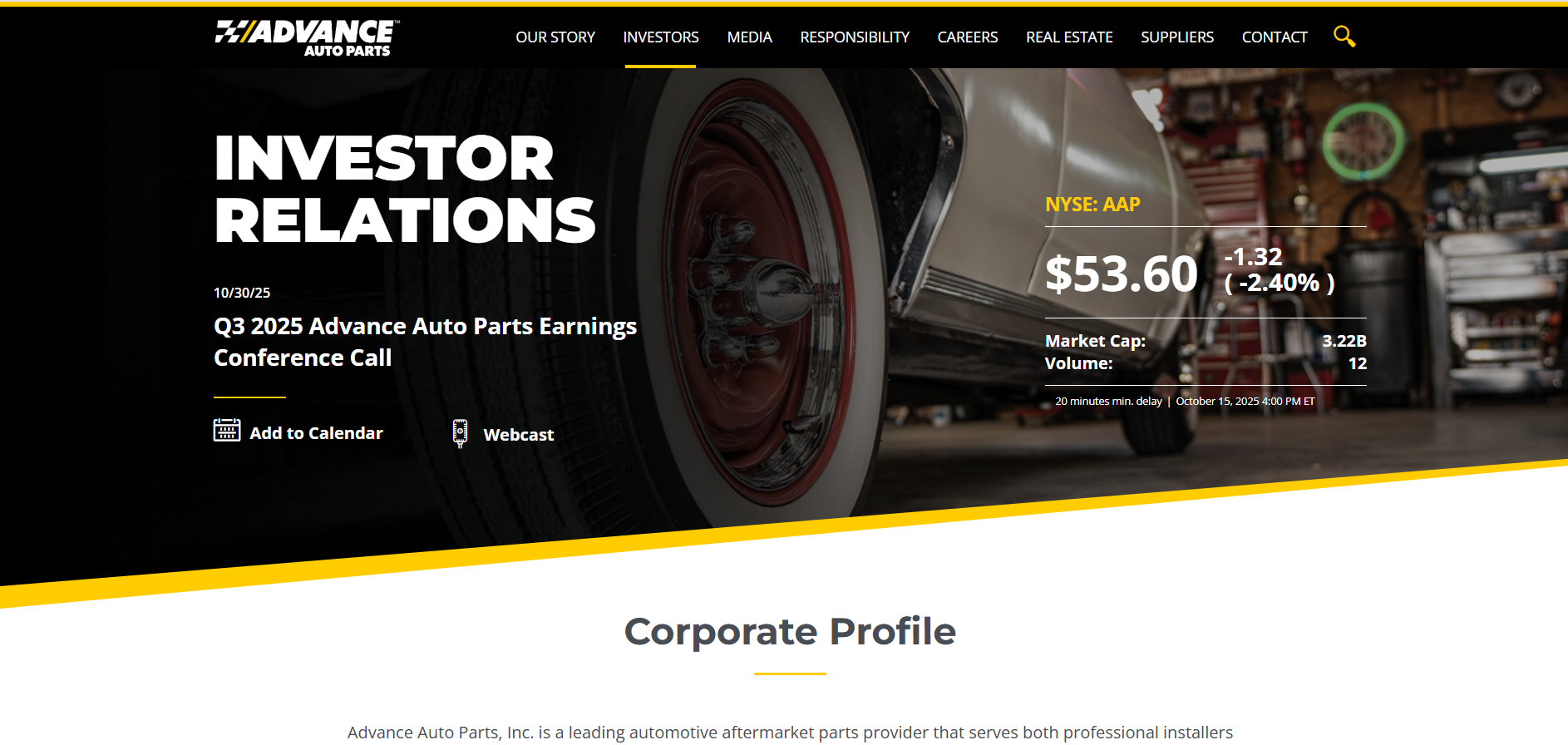Transforming the Digital Retail Journey for Advance Auto Parts
Advance Auto Parts, a leader in the automotive aftermarket retail and service industry, partnered with our team to design and develop a complete website from the ground up. The goal was to create a unified, high-performance digital ecosystem that bridges its national store network with a powerful e-commerce experience. The project involved comprehensive website design and development from scratch, combining UX strategy, visual design, and both front-end and back-end engineering. Our approach leveraged a headless e-commerce architecture to ensure flexibility, scalability, and speed while integrating critical systems such as store inventory, service scheduling, and loyalty management.

Challenges
Advance Auto Parts’ business model demanded solutions to several complex problems:
- Catalog complexity and discoverability. Customers search by part type, brand, vehicle fit, or SKU and expect immediate, accurate results.
- Inventory and fulfillment synchronization. Online availability had to reflect real-time store stock to enable same-day pickup and curbside workflows.
- Service visibility. Free and paid in-store services needed clear presentation and scheduling options so customers could plan visits.
- Omnichannel loyalty. Speed Perks membership and rewards had to be visible and redeemable across channels.
- Performance at scale. During promotions and store events, the site must remain responsive for millions of product pages and high traffic peaks.
- Usability and accessibility. The experience had to work quickly on mobile, be accessible to all users, and simplify complex tasks like identifying the correct part for a vehicle.
Approach & Process
We delivered the project in phased sprints using Agile project management to align stakeholders, enable early testing, and progressively roll out core capabilities.
Discovery and research
- Stakeholder workshops with merchandising, store operations, and customer care teams.
- User research sessions and analytics audit to map typical journeys: DIY repair, professional installer, urgent part replacement, and gift/seasonal shoppers.
- Technical discovery with IT to audit existing inventory and POS systems and define integration boundaries.
Information architecture and UX
- Designed a search-centric IA where users can look up parts by type, brand, vehicle compatibility etc.
- Built progressive filtering and guided compatibility checks to reduce incorrect purchases.
- Developed clear flows for “Buy Online, Pickup In-Store,” “Same Day Curbside,” and “Home Delivery.”
Design and accessibility
- Mobile-first responsive UI emphasizing legibility, clear CTAs, and fast interaction patterns.
- WCAG-aware patterns to ensure accessibility across navigation, product pages, and forms.
Architecture and integration
- Implemented a headless e-commerce architecture decoupling the frontend presentation layer from backend services for flexibility and performance.
- Real-time inventory synchronization through API connectors to store management systems so availability and pickup windows are accurate.
- Loyalty integration to surface Speed Perks balance, apply rewards, and enroll users during checkout.
- Payment gateway, order management, and logistics integrations for pickup/delivery.
Performance, SEO & analytics
- CDN, image optimization, and server-side rendering for fast initial loads and SEO friendliness.
- Structured data and metadata strategy for product pages to boost discoverability.
- Analytics dashboards for conversion funnels, pickup fulfillment rates, and service adoption.
Testing, rollout and training
- Multi-round QA, including device/browser matrix tests and high-load simulations for peak events.
- Pilot rollouts with selected stores for inventory and pickup workflows.
- Training sessions and documentation for store teams and corporate admins.
Key Features Delivered
Part discovery and product pages
- Powerful search supporting brand, part type, vehicle lookup, and SKU entry.
- Compatibility checks and fitment guidance to reduce returns.
- Rich product content: specs, cross-references, how-to links, and related bundles.
Store-centric commerce
- Find a Location module showing store hours, available services, and in-stock status.
- Same-Day In-Store Pickup and Same-Day Curbside workflows with 30-minute readiness windows.
- Ability to add free in-store services at checkout (battery install, wiper install) and schedule service time.
Free in-store services visibility
- Prominent service icons on store pages and product flows (battery testing, OBD-II code scanning, loaner tools).
- Clear policy text and eligibility rules surfaced in context.
Loyalty and offers
- Speed Perks integration for sign up, points display, and reward redemption.
- Campaign engine for store and national promotions with time-limited banners and regional targeting.
Operational tools
- Admin dashboards for monitoring pickup fulfillment, order errors, and service utilization.
- APIs for suppliers and vendor portals to sync pricing and availability.
Accessibility & UX refinements
- Keyboard and screen-reader friendly interactions, contrast-compliant color palette, and semantic markup.
- Simplified flows for users under time pressure (urgent battery replacement, roadside repairs).
Deliverables
- Full UI/UX design system and component library.
- Headless frontend built with server-side rendering for SEO and speed.
- Backend e-commerce integration layer with inventory.
- Store locator and services module with scheduling engine.
- Loyalty integration (Speed Perks) and promotions engine.
- CMS for content and campaign management.
- Analytics dashboards and operational monitoring tools.
- QA reports, accessibility audit, and staff training materials.
Business Impact (Qualitative Outcomes)
After launch the platform delivered multiple operational and customer experience benefits:
- Faster path to purchase. Customers can quickly find parts by vehicle, brand or SKU and choose pickup or delivery without guesswork.
- Reduced in-store friction. Accurate inventory and clear service options reduced support calls and decreased failed pickups.
- Increased conversion of same-day pickup users. Clear pickup calls to action and 30-minute readiness windows improved customer confidence in online ordering.
- Stronger adoption of free services. Highlighting free battery installations, code scanning, and wiper installs increased foot traffic and cross-sell opportunities.
- Improved loyalty engagement. Speed Perks visibility throughout the journey increased program sign-ups and repeat visits.
- Operational efficiency. Real-time sync and admin dashboards reduced manual reconciliation between online orders and in-store fulfillment.

“Transforming digital retail at scale demands precision, performance, and a customer-first mindset. Through our collaboration with Advance Auto Parts, we built a high-performing e-commerce ecosystem that seamlessly connects online discovery with in-store fulfillment by creating a faster, smarter, and more connected experience that drives loyalty, performance, and customer satisfaction.”

Conclusion
The Advance Auto Parts website project was a full-spectrum digital transformation: it modernized product discovery for a complex catalog, tied online shopping to fast, reliable local fulfillment, and made value-added services a visible and measurable part of the customer experience. By combining a search-first UX, headless architecture, deep store integrations, and loyalty features, the new platform aligns with both the practical needs of DIY and professional customers and the operational realities of a large national store network.